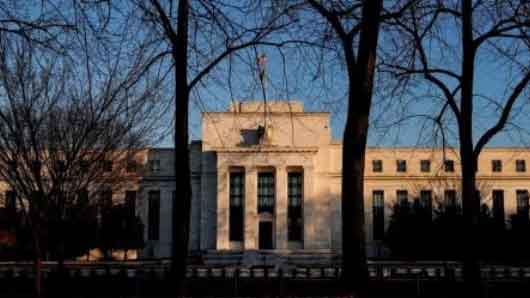By ANN SAPHIR HOWARD SCHNEIDER
WASHINGTON- Federal Reserve officials on Wednesday pointed to the large policy uncertainty around tariffs and other issues arising from the early days of President Donald Trump’s administration as among the top challenges in figuring out where to take US monetary policy in the months ahead.
Chicago Fed President Austan Goolsbee warned that ignoring the potential inflationary impact of tariffs would be a mistake, whereas Richmond Fed President Thomas Barkin said it remains impossible at this early stage to know where cost increases from any tariffs might be absorbed or passed along to consumers.
The views of the two US central bankers were emblematic of the cautious approach Fed officials are angling to take in deciding whether to resume interest rate cuts later this year or continue to keep them on hold. The Fed left its benchmark interest rate unchanged last week in the 4.25 percent-4.50 percent range after cutting it at three straight meetings to close out 2024.
The US economy is strong, the labor market is “plausibly” at full employment, and inflation has come down and is approaching the Fed’s 2 percent goal, Goolsbee said in remarks prepared for delivery to the Chicago Fed’s annual auto symposium in Detroit.
“Yet we now face a series of new challenges to the supply chain – natural and man-made disasters from fires and hurricanes to collisions with bridges that take out major ports, canal cloggings and threats of dockworker walkouts; geopolitical disruptions; immigration; and, of course, the threat of large tariffs and the potential for an escalating trade war,” Goolsbee said.
“If we see inflation rising or progress stalling in 2025, the Fed will be in the difficult position of trying to figure out if the inflation is coming from overheating or if it’s coming from tariffs,” Goolsbee said. “That distinction will be critical for deciding when or even if the Fed should act.”
The Trump administration announced last weekend that 25 percent tariffs on imports from Mexico and Canada would start on Feb. 4, but it delayed them until March 1 after the leaders of the two major US trade partners agreed to crack down on drug smuggling and help stem the flow of undocumented migrants into the US
An additional 10 percent tariff on imports from China went into effect on Tuesday.
Barkin, speaking to reporters after a Conference Board event in New York, said the “lean” in the latest set of policymaker projections is still toward further rate cuts this year, although uncertainty about the impact of tariffs, immigration and regulations will need to be better understood.
On tariffs specifically, Barkin said he sees three layers of complexity in arriving at their ultimate impact on inflation and demand.
First is the uncertainty around the level of duties and exactly who they are levied upon, Barkin said. The next unknown is whether other countries retaliate with tariffs of their own and to what degree companies absorb or pass on the higher import costs. Lastly, he said, is seeing “how this will all land on consumers.” —Reuters





